I'm a big Nintendo fan. No secret there. When I first started researching Nintendo history, I learned that the company made playing cards and toys from 1889 to the mid-1970s when they first broke into the video game biz. With such a passion for their games, I've always dreamed of seeing Nintendo's pre-electronic collectibles on display in a museum. One man in Japan is living my dream, because his house is that museum.
Japanese collector Isao Yamazaki has been spreading the fun (and history) of Nintendo for over 30 years. He has one of the largest Nintendo collections on earth, and has written five books on video game history. He's been interviewed on Japanese TV about his collection and even helped manage a temporary Nintendo museum in 2007.
I was excited to get the chance to quiz Yamazaki-san about his treasure hoard, the history of Nintendo, and the secrets to building a collection like his.
- History of Nintendo
- Gunpei Yokoi
- Isao Yamazaki's Nintendo Collection
- Q. Why did you first start collecting Nintendo toys?
- Q. How big is your collection?
- Q. What are your three most prized items?
- Q. What is your favorite kind of Nintendo collectable to search for?
- Q. Do you have any amazing stories of fantastic finds in your collecting career?
- Q. What advice do you have for people wanting to have a Nintendo collection like yours?
- Nintendo Museum and Books
- Q. How did you get involved with the Nintendo museum and what challenges did you face?
- Q. How many people visited the museum?
- Q. Of your five books, which one was your favorite to write?
- Q. Your first book is one of the earliest sources of Nintendo history. What was it like writing a history of video games with no other books to read and no internet to help you?
- Favorite Game and Nintendo's Future
History of Nintendo
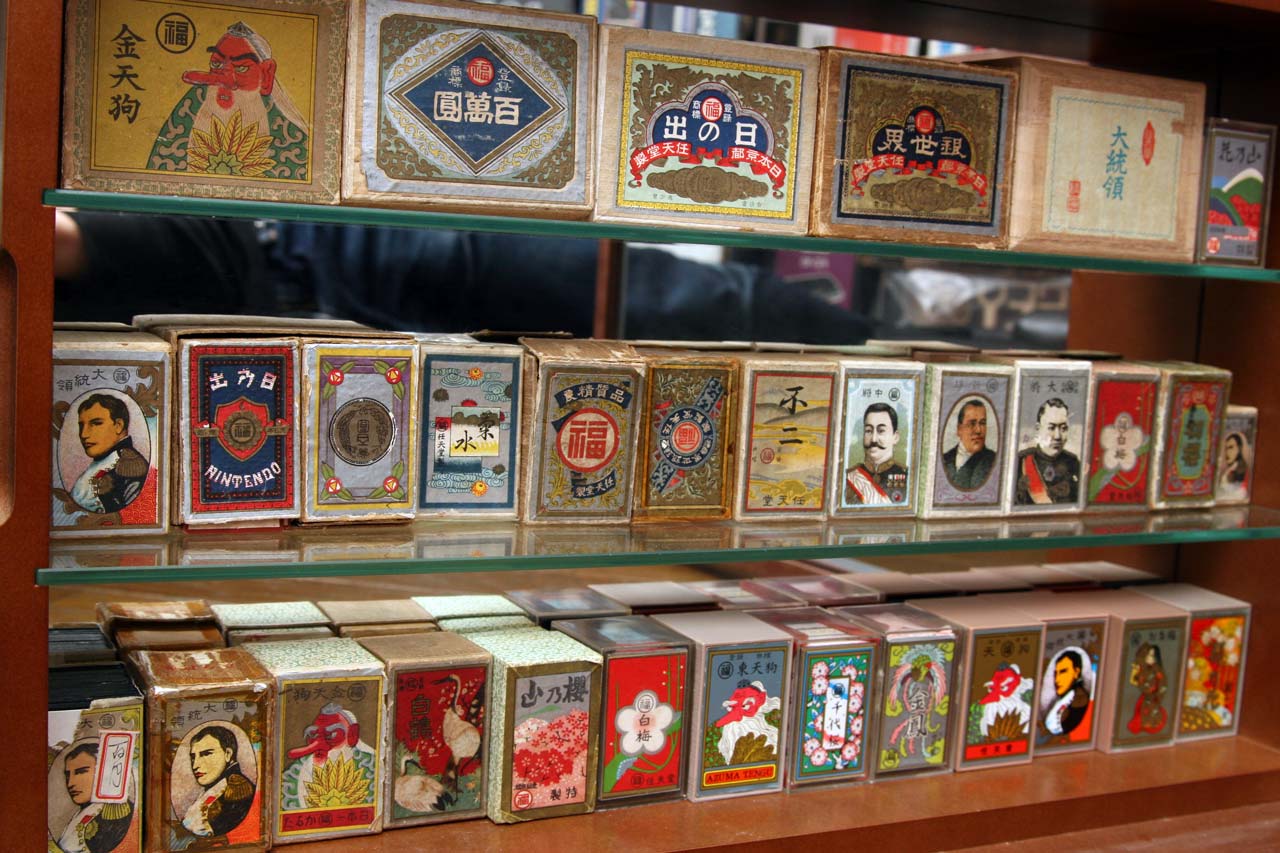
Before digging into this man's massive Nintendo collection, you'll probably need a better understanding of Nintendo's immense history. And no one knows it better than Yamazaki himself (he's written five books on Nintendo). So I started our interview with a question that begs a long answer.
Q. Most people only know about Nintendo's video games. Tell us a little about the company's history before the Famicom.

Although Nintendo is known today as a video game manufacturer, their history stretches back nearly 130 years. For the first 60 years, Nintendo grew as a manufacturer of traditional Japanese card games like Hanafuda and Karuta. They produced Japan's first playing cards in the 1890s. At that time, card games were generally played by adults, but that changed in the 1950s when they released cards featuring Disney characters. Suddenly playing cards were getting attention from children.
In the 1960s, a period of rapid economic growth created a greater demand for leisure. There were more options for people to spend free time, so Nintendo's card business shrunk drastically. The company was in danger of going bankrupt, so they started selling toys like Ultra Hand and Ultra Machine. Some of them were successful, but there were a lot of failures.
Nintendo's business model was a gamble. Their entertainment products were either wildly successful or complete flops. So they tried expanding into other industries to gain stability. They founded non-entertainment businesses, like instant rice, taxi services, and hotel services. But these all failed because Nintendo had no knowledge of these industries. When the company regrouped, its leadership decided to focus on its strong point: toys.
Nintendo's business model was a gamble. Their entertainment products were either wildly successful or complete flops.
In the 70s, Nintendo began incorporating electronics into their toys, long before their competitors. They repeated their cycle of success and failure with products like Love Tester and Ray Gun SP. They operated on a shoestring budget and sold everyday products to gain stability. Taking advantage of the expertise they gained making toys, Nintendo made office machinery, nursery items, stationery, and healthcare products. But none of these became a main source of revenue.
Around this time, the company expanded into arcade games. They opened the then-largest entertainment facility ever, called Lazer Clay Shooting System. This was another last ditch effort to gain stability, but the facility failed because of the 1973 OPEC oil crisis. Nintendo went bankrupt again, staying afloat thanks to the copyright sales of a few of small arcade games.
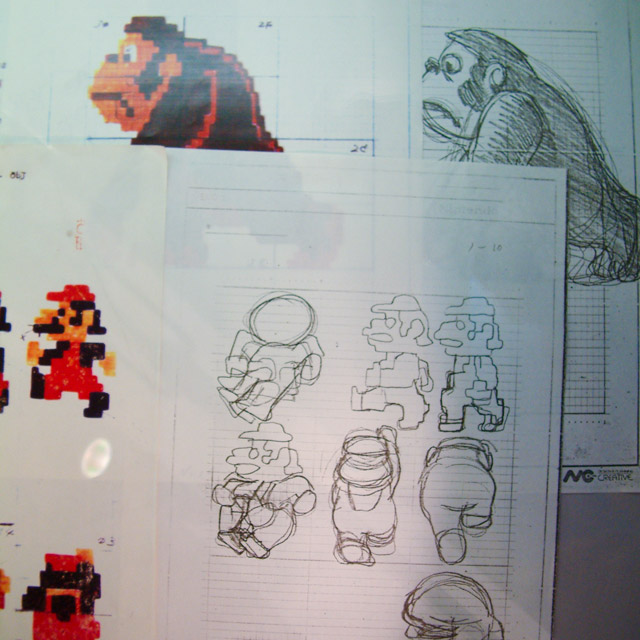
In 1977, Nintendo released its first home game console called TV Game 6. That same year they released TV Game 15. Both were successful in Japan. Things were starting to look up.
In 1981, Donkey Kong became a big success both in Japan and the US. At the same time, Game & Watch, a series of mobile games with liquid crystal display, became popular all over the world. From these two successes, Nintendo had the budget to start developing the Famicom.
Nintendo succeeded because they learned from a lot of failures and kept trying new things. They gained knowledge about software through failed product ideas, and hardware technology through arcade games. This came together to make Nintendo into the international company we know today.
Selection of Pre-Famicom Nintendo Toys
1. Ultra Hand (1966)
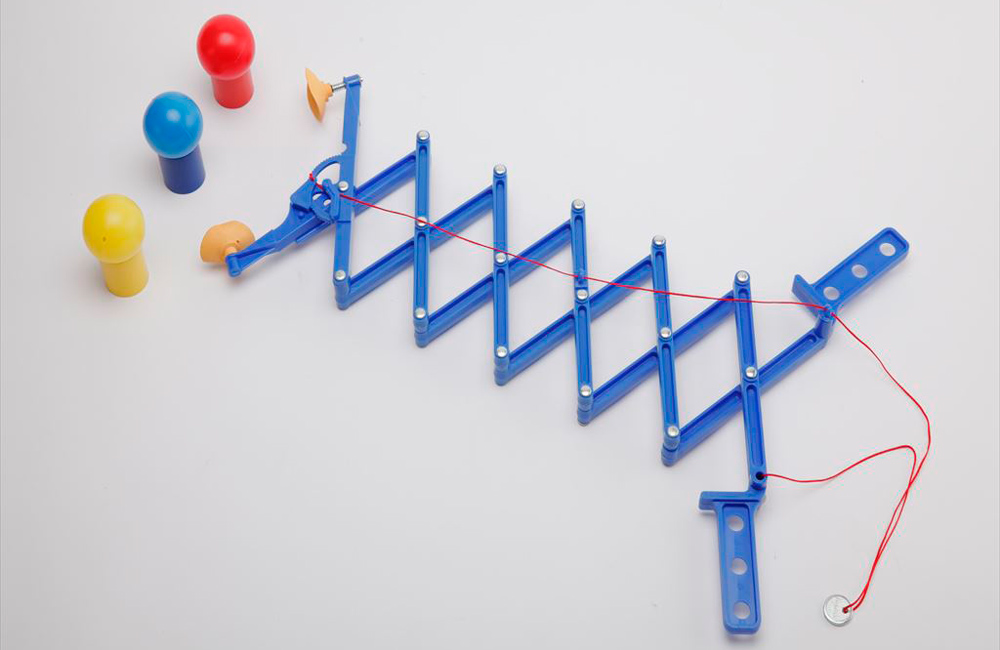
Gunpei Yokoi's Ultra Hand was one of Nintendo's early toy successes, and put the company on the map as an up-and-coming toy manufacturer. It sold for ¥600 and works exactly the way it looks like it works. By grabbing the handles at the bottom, you can expand and contract the Ultra Hand to grab things from far away. Ultra Hand came with three colored balls on stands you could use to practice your grabby skills.
2. Love Tester (1969)
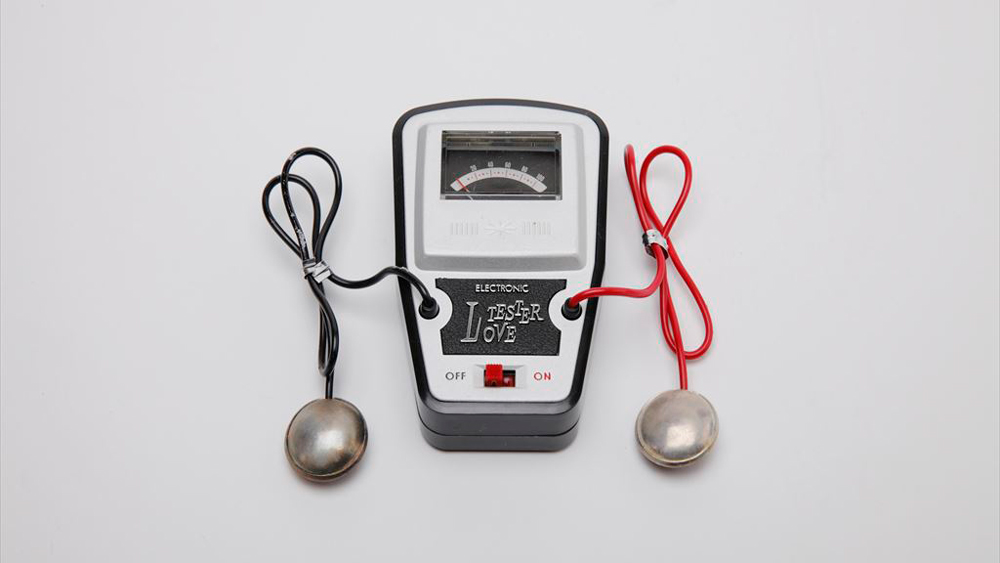
The first Nintendo product to contain electronics was also made by Gunpei Yokoi. Marketed to adults, the Love Tester sold for ¥1,800 and came with a black leather carrying pouch (for transport to social gatherings, one would assume).
Using only one AA battery, the Love Tester measures the level of "love" between a couple, when each person holds the other's hand and one of the metal cups (in reality, it only measures the couples' conductivity). Japan was still pretty conservative in the 1960s, so any excuse to hold hands was a good excuse.
3. Light Beam Gun SP (1970)
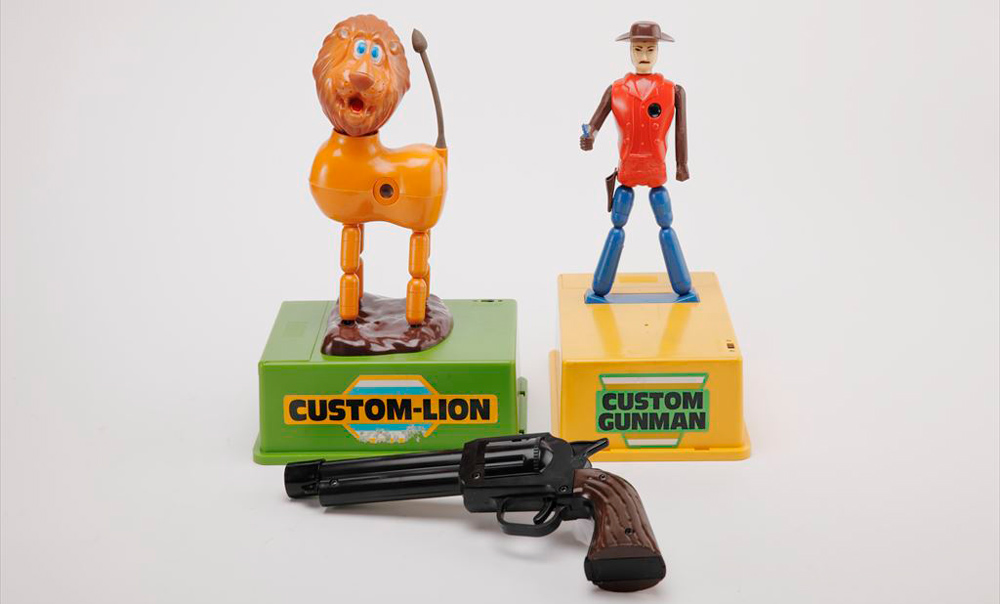
This clever gun was a precursor to the NES/Famicom Zapper. The guns fired quick beams of light, which reacted to solar cells embedded in various targets. Back in the days before video games, these were high tech (solar cells were a new technology at the time). The introductory price for the gun alone was ¥14,000.
4. Ultra Scope (1971)
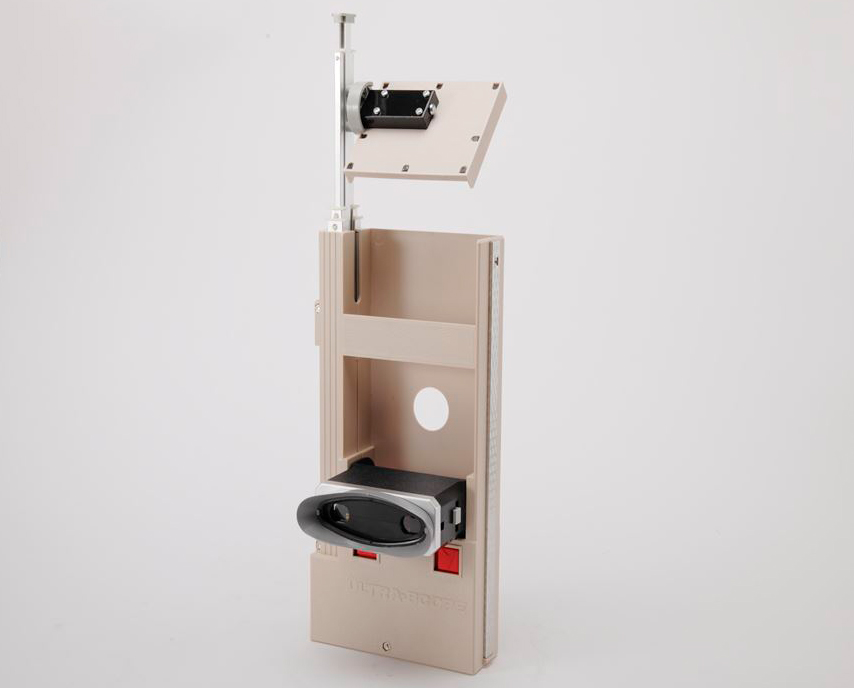
The Ultra Scope used two mirrors to mimic the periscope experience without needing an expensive submarine. The toy initially sold for ¥2,980 and was a hit with kids and parents alike. The extension of the arm is powered by a small motor, giving the toy a "hi-tech gadget" feel. Once fully extended, the top mirror is a full meter high.
Q. Who do you think is the most influential person in Nintendo's history?
The third president, Hiroshi Yamauchi.
He turned Nintendo the small card game company into Nintendo the world famous video game manufacturer. He set the organization's basic mindset and attitude. He also saw potential in people like Gunpei Yokoi, Shigeru Miyamoto, and former president Satoru Iwata, giving them chances to develop their talents.
Q. Who is the most overlooked hero in Nintendo's history?
Minoru Arakawa, former president of Nintendo of America.
He is well-known abroad, but few people know about him in Japan. Starting from zero, he built the video game market in the US and grew it larger than Japan's. He got the license for Tetris and made the Nintendo 64 a strong competitor for the PlayStation.
Arakawa is the husband of Hiroshi Yamauchi's daughter. He was an executive at Nintendo and had a fantastic career, but he couldn't become Hiroshi Yamauchi's successor and left the company.
Gunpei Yokoi
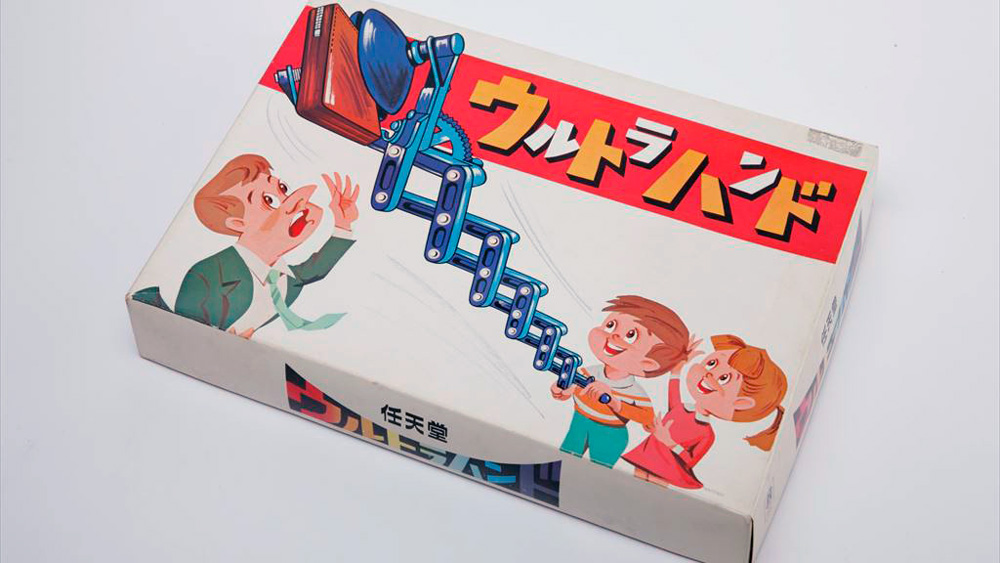
You can't talk about Nintendo's early history without talking about Gunpei Yokoi. Isao Yamazaki has a complete collection of every Nintendo product made by Yokoi. So needless to say, he's a fan. And for good reason.
Gunpei Yokoi brought innovation to Nintendo, back when it was first transitioning out of the playing card business and into the wider entertainment world. All the toys we listed earlier were his creations.
Gunpei Yokoi was the Nintendo's driving force during its toy era and the success of his products increased the company's budget to the point that they were able to develop the Famicom. Bottom line: without the success of Yokoi's toy inventions, Nintendo never would have made video games.

One of his core philosophies was, "kids find fun what adults find fun." This is the opposite of the conventional thinking that toys and games should be made "for kids." Instead, Yokoi thought that kids should be treated like adults, and in doing so, they were able draw the attention of all age groups.
Even though his heyday was Nintendo's toy era, he didn't stop innovating once the company exploded into the video game market. He was the man behind Game & Watch, Game Boy, Metroid, and Kid Icarus.
Q. What is the best invention by Gunpei Yokoi, in your opinion?
The D-pad controller button. It's durable, you can control without looking down at your hands, and it's cost-effective. This design has been used as a standard controller button for home video game consoles for a long time.
There's a story that Mr. Yokoi didn't even realize this invention was great until people told him. This describes his personality well. Even though he made fantastic inventions, he didn't try to impress people or act arrogant.
Q. Explain the meaning of Gunpei Yokoi's philosophy, 枯れた技術の水平思考 (lateral thinking with withered technology).
Entertainment products are not crucial for living. So even if it's high quality, expensive products won't sell well. Technologists tend to apply cutting-edge technology to their products. However, the latest technology is usually expensive, and can be unstable because few people have experience working with it.
On the other hand, if the technology is time-tested, then it's stable and the price is likely cheaper due to mass production.
- 枯れた技術の水平思考
- lateral thinking with withered technology
"Lateral thinking with withered technology" is the idea of creating something new by combining old technology with new ways of using the technology. Fundamentally, Mr. Yokoi's philosophy is at the root of Nintendo.
One example is the Love Tester, which turned an ammeter (a machine that measures electrical current) into a game that measures "love." Another is the Ray Gun SP, which used solar batteries as sensors for the gun target. Or the Game & Watch, which converted the liquid crystal display from calculators into a game. Even the Nintendo DS adapted touch panels used in ATMs and PDAs into a mobile game system (long before smart phones showed up).
Sales of video games depends on productivity and cost performance. The faster and cheaper you bring products to market, the more money you make. Old technology helps achieve this better.
Q. What is the best example of "lateral thinking with withered technology" in Nintendo history?
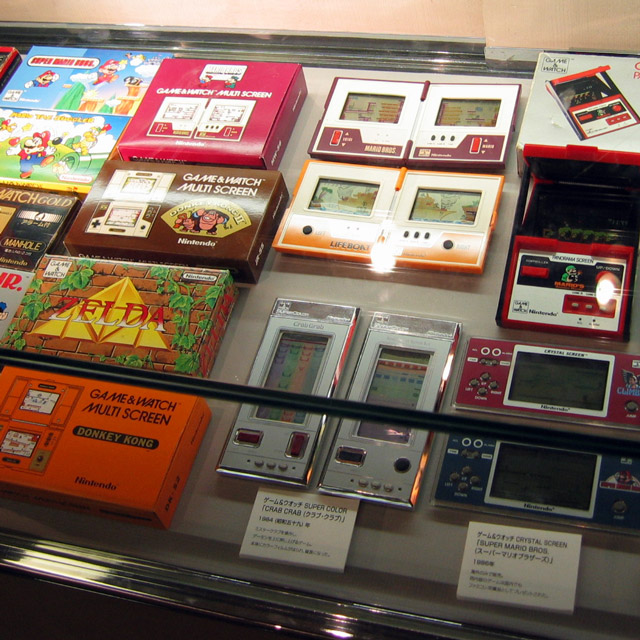
Simple. Game & Watch.
Nintendo took advantage of liquid crystal display, which was used for calculators, and created the foundation of mobile gaming. Back when the Game & Watch was created, the LCD market was competitive and the technology was advanced. The size of the displays was getting smaller and prices dropped dramatically. But aside from calculators, there was no other use for LCD technology.
Just as the LCD industry was shrinking, Game & Watch came out with a large display. Because of its success, production of LCDs increased. This contributed to the development of a new type of liquid crystal, which reduced the cost and improved LCD technology. Most importantly though, it led to the creation of the Game Boy.
Isao Yamazaki's Nintendo Collection
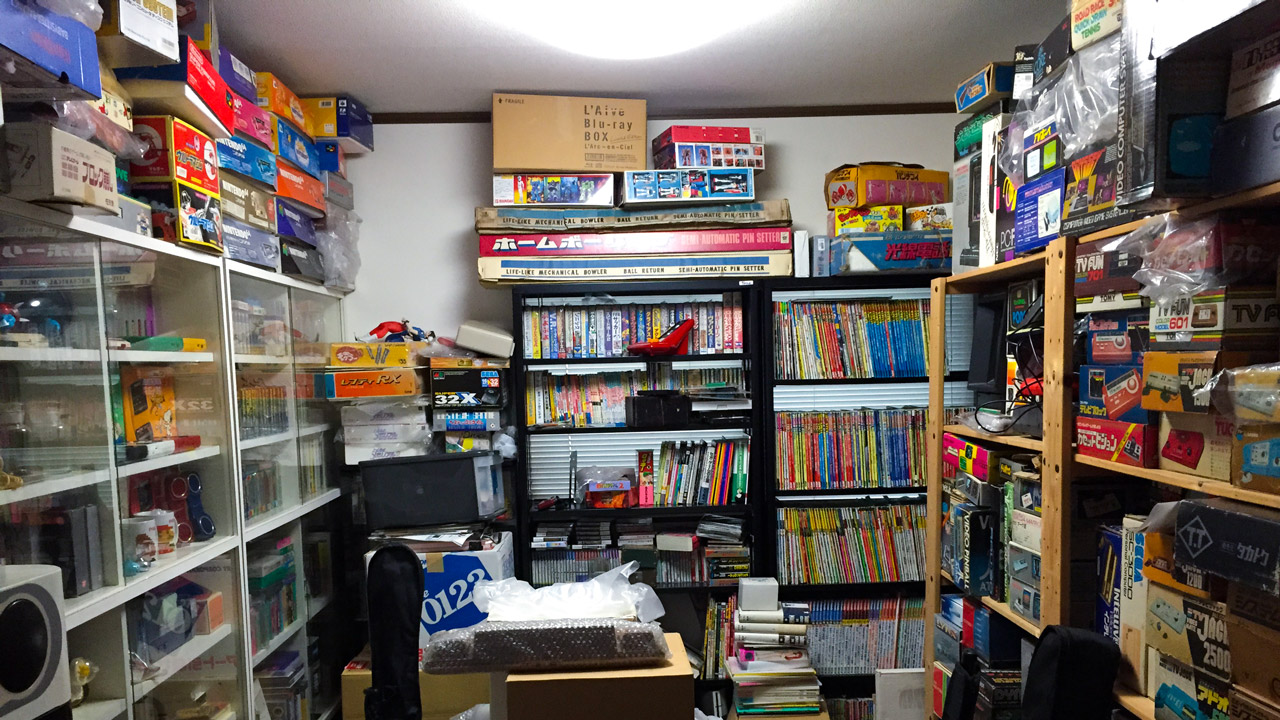
Isao Yamazaki didn't acquire his massive collection (or extensive knowledge) overnight. It took years of dedication and patience. But why start in the first place? What goodies did he have in his Nintendo collection and what lengths did he go to get them? And most important for me, what Nintendo collecting tips does he have for newbies?
Q. Why did you first start collecting Nintendo toys?
As I played games, I wondered, "why do Nintendo games have that certain quality and fun factor that games from other companies don't?" So I started collecting because of my desire to play all of their games.
When the Super Famicom was in its prime, you could buy Famicom games for cheap (a couple hundred yen each). Also, my friends gave me games they had grown bored with, so I built up my collection naturally. I got more serious about collecting while researching the history of Nintendo. I was surprised to learn about their long history of failure and success, and all the products they made besides video games.
Q. How big is your collection?
I own more than 8,000 items, more than 90% of which are Nintendo products.
Q. What are your three most prized items?

1. Nintendo Karuta Poster
This poster features every Nintendo product made at the time it was printed, the beginning of 1890. The design is fabulous. Even though it's over 100 years old, it uses gold and silver coloring. The ornamentation is gorgeous. You can see the outstanding quality of Nintendo's products from this poster. Very few copies of this poster exist today, so it's a precious document.
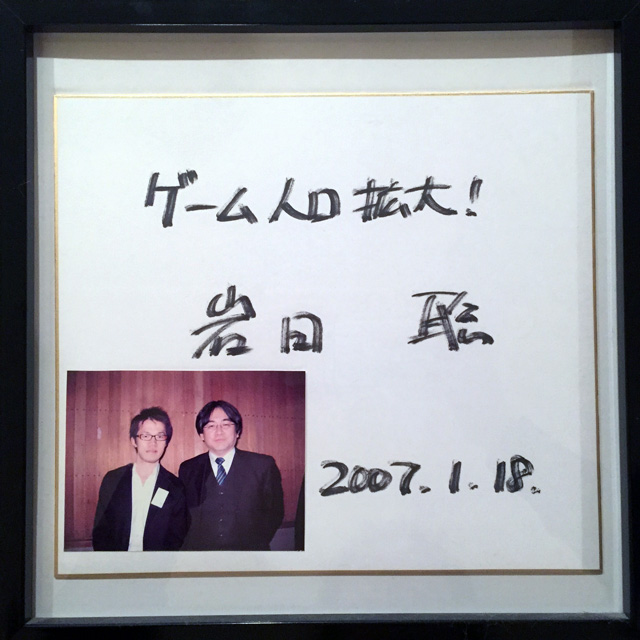
2. A picture of me with former Nintendo president, Satoru Iwata with accompanying autograph
I got this when I met former Nintendo president (and my hero), Satoru Iwata. I think the picture is priceless, because it's me with a great person who managed and developed Nintendo's business (and I am a Nintendo groupie).
3. Love Tester
The idea is Nintendo-esque, but the product is not. It plays on the human desire to be popular with the opposite sex. It also has historical value as it represents Nintendo's idea of "lateral thinking with withered technology." This is the basis of a lot of Nintendo's creativity. This product also reveals a characteristic of Japanese people who were hesitant to buy the product because they felt embarrassed - it didn't sell well, and it was a big topic at the time.
Q. What is your favorite kind of Nintendo collectable to search for?
I collect with the mindset of an archaeologist. I'm not interested in products for preservation's sake, or things that are well-documented. I mainly collect things that aren't well-known. For example, things that have been surviving in a niche market for a long time, but are not assorted in an archive or catalogue.
Q. Do you have any amazing stories of fantastic finds in your collecting career?
I got a stroller made by Nintendo. It's really rare and was sold over 40 years ago.
Ten years ago, I found the Nintendo stroller on someone's blog. The person found it while organizing a storeroom, and showed it on the blog. I decided to contact them, even though I doubted they would give me the stroller. They told me I could get it for free, since the person was about to throw it away. I was so happy that I managed to get ahold of such a precious treasure. Since then, I've never seen the product anywhere else and I don't know anyone else who owns one.
Q. What advice do you have for people wanting to have a Nintendo collection like yours?
A good collecting experience comes from collecting something you like and sharing the information about it with others. It's easy to collect when you have money and an internet connection, but it's also competitive. The more rare the items are, the more expensive they are. But if you contact your competitors and try to communicate, you start building good relationships with them and collecting becomes fun.
Nintendo Museum and Books
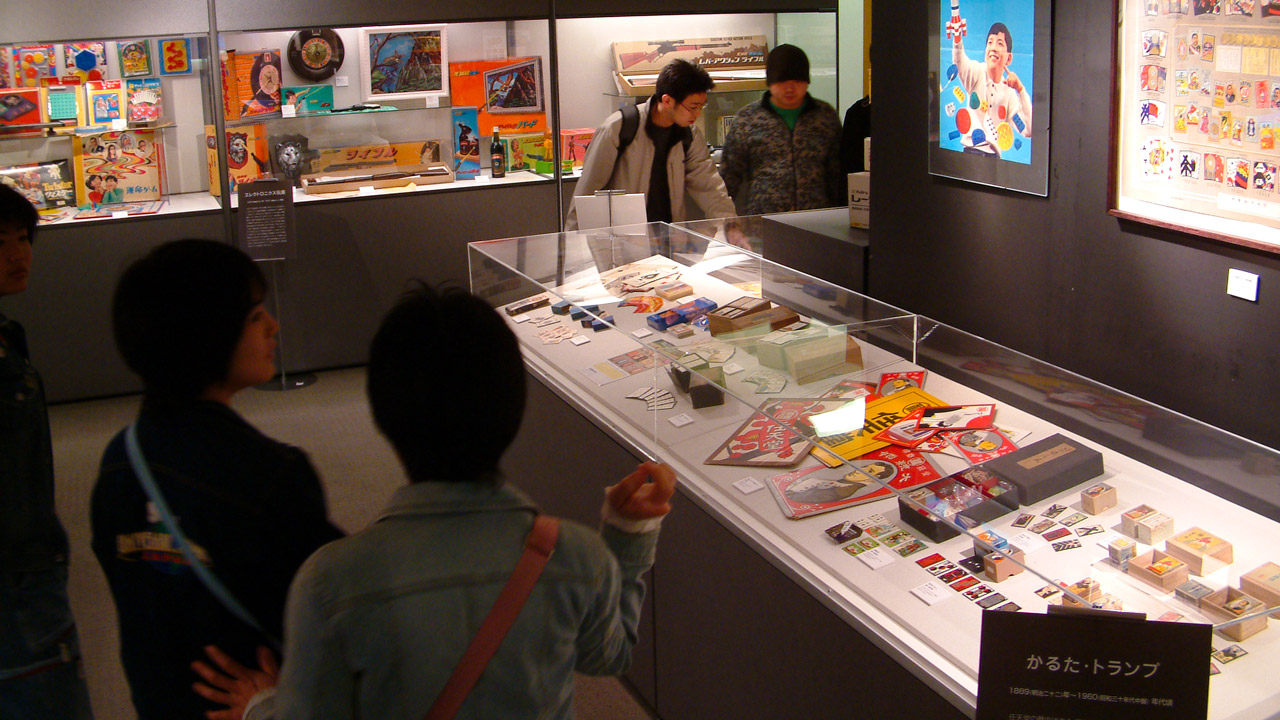
Isao Yamazaki isn't just a collector for his own sake. He wants to spread his love of Nintendo to the world. That's why he's written five books on video game history. His first was the first book on Nintendo history ever written. Other Nintendo history buffs have been standing on his shoulders ever since.
But he didn't stop with books. In 2007, he contributed to and helped manage the official Nintendo Museum event in Osaka. In fact, the museum wouldn't have happened without donations from his collection. Nintendo called on him personally to help put the temporary museum together.
Q. How did you get involved with the Nintendo museum and what challenges did you face?
Around that time, I was writing articles for a magazine called Nintendo Dream, showcasing old toys. Hankyu department store in Osaka contacted the magazine's editor to join forces for Hankyu Umeda's 100th anniversary event.
Hankyu has a longstanding relationship with Nintendo. They didn't sell Sony or Sega products when the sales of Nintendo 64 were low. Initially Nintendo didn't want to do the event because they usually don't talk about their old products. But eventually they gave in because of their good relationship with Hankyu. I joined the team at the planning stage, and got space to introduce the toys from the 1880s to today.

The content was carefully inspected, because it was an official Nintendo event. I couldn't show items they didn't want to show. I went to Osaka the night before the event, and arranged toys until morning. I thought it would be handled by Nintendo or event officials, but they said they didn't know the best way to arrange the exhibit and left it to me. My friend from France also flew in and helped me.
After the museum opened, many people came and enjoyed looking at all the toys. I helped the event as a staff member. I was so excited I didn't even realize how tired I was. I fell asleep the moment I got on the Shinkansen.
Before the event ended, I went back to Osaka and met Nintendo executives visiting the event. Even though people say Nintendo doesn't look back at their past, they told many stories, their eyes sparkling with nostalgia. I have a dream to one day create a permanent Nintendo exhibit and expand it across Japan.
Doing research on Nintendo history that no one else had done was like working on an archaeological dig. Since there was no archive, I was collecting facts by discovering many smaller pieces.
Q. How many people visited the museum?
It was packed, even though there was hardly any advance notice. The popularity of the DS and Wii (and the free admission) certainly helped. It was only supposed to be a week-long event, but it was extended for a few more days. I was told it exceeded the goal Hankyu set.
Q. Of your five books, which one was your favorite to write?
The Nintendo Complete Guide. It's the topic I put the most effort into, and getting all that into a single book had always been a dream of mine.
Q. Your first book is one of the earliest sources of Nintendo history. What was it like writing a history of video games with no other books to read and no internet to help you?
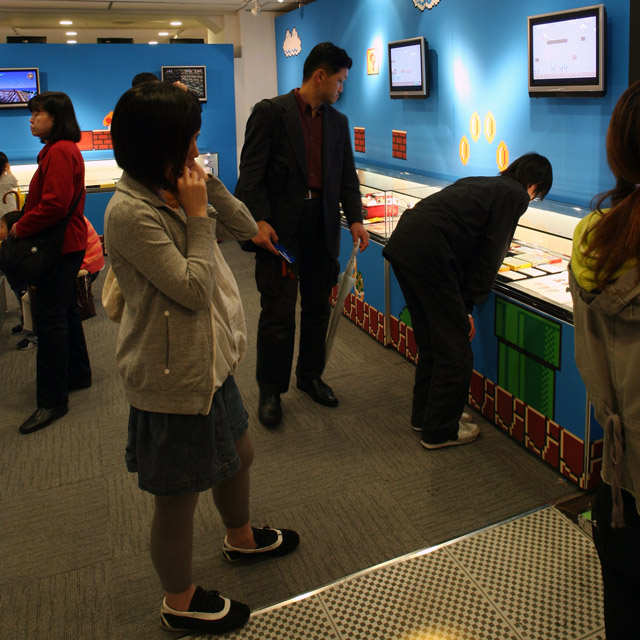
Doing research on Nintendo history that no one else had done was like working on an archaeological dig. Since there was no archive, I was collecting facts by discovering many smaller pieces.
At first, I sent a five page letter to Nintendo full of questions, but they politely declined because they hadn't saved any records. So I decided to uncover Nintendo's history by myself and devoted four years to it while I was in college. I visited toy shops all over Japan. I went to Japan's largest national library almost every day, scouring books, magazines and newspapers published over the last 100 years. I did as much as I could.
I would go days and days without finding anything, but when I finally came across a new piece of information, I would get really excited. I was uncovering history by constantly researching and connecting the dots based on what I had found.
Favorite Game and Nintendo's Future
To close this interview, I wanted to find out what the self-proclaimed "No. 1 Nintendo Researcher" played in his spare time. And more importantly, with a noggin full of Nintendo history, what did he think of the company's current Switchy direction?
Q. What is your favorite Nintendo game of all time?
If I had to choose, I'd say Mario Bros. When I was a kid, it was the game I was the most into. I loved competing with my friends in multiplayer. I still have so much fun playing that game. The original illustrations are really good, and it's historically interesting because it was made by Shigeru Miyamoto in collaboration with Gunpei Yokoi. I bought the arcade version and enjoy seeing the differences between it and the Famicom version.
Q. What do you think about Nintendo's future?
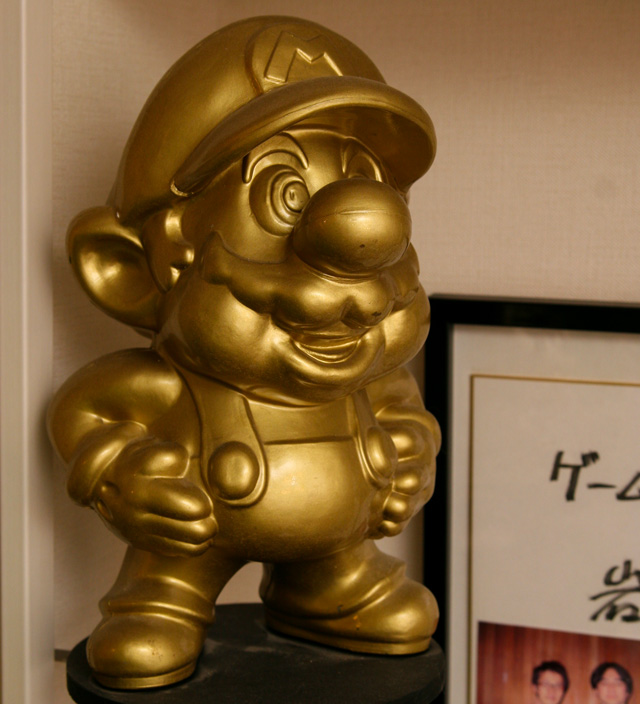
I believe Nintendo is going in a good direction. I don't feel they've ever gone in a bad direction. I've always supported the company and bought their products since I was a child. Today I am a shareholder, not for trading, but just to support them.
The history of Nintendo is a cycle of failures and successes. Failure means they keep trying new things. Of course, I want them to succeed, but even if they fail, I am sure they will use what they learned from their failure as they take on their next challenge. If Nintendo has a hard time in the future, I am excited to see how they will bounce back using their products.
Q. Any final words for the Tofugu readers?
When it comes to collecting, I think everyone can enjoy it in whatever way they like. You can enjoy preserving games without playing them or you can enjoy playing games without caring about the condition.
Personally, I find value in letting people touch, play, and enjoy things from my Nintendo collection, rather than keeping them in boxes. I want to give people the opportunity to touch and see Nintendo toys and products up close. The value of my collection is meeting people who love Nintendo the same way I do. If this interview helps create new Nintendo fans, or friends of mine, or friends of yours, then I couldn't be happier.
